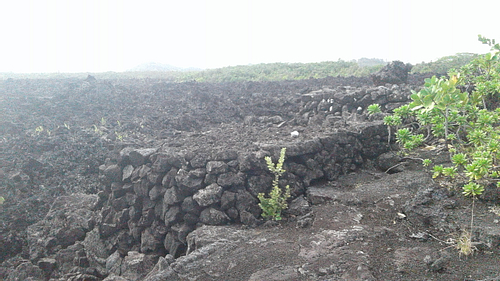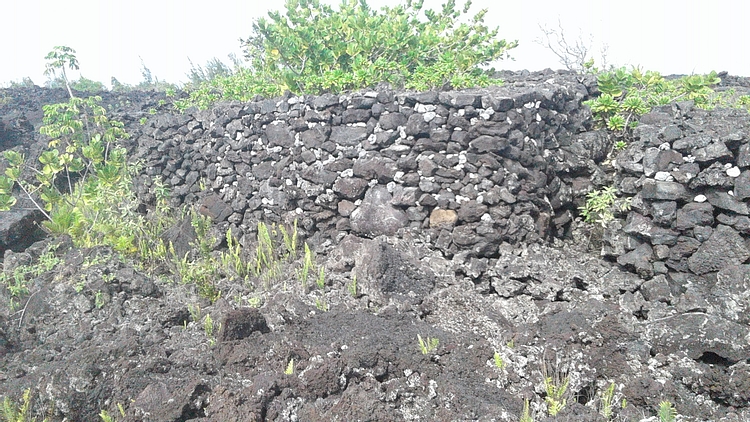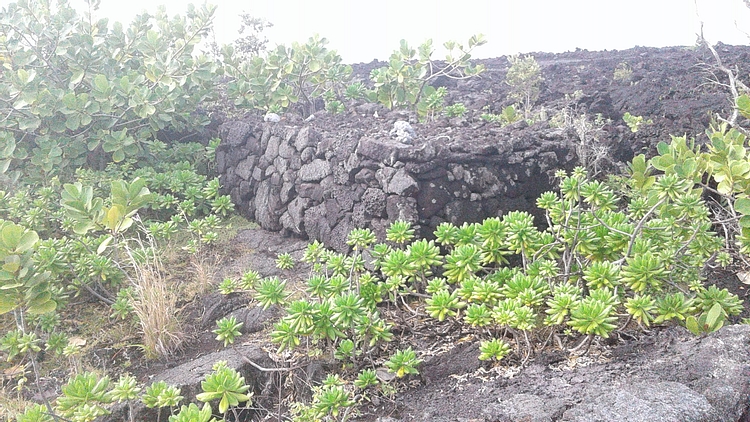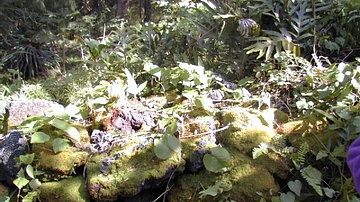
Located at the easternmost point of the Hawaiian Islands, Cape Kumukahi holds a special place in ancient Hawaiian mythology as this was where the gods and goddesses first arrived in the islands from Tahiti. It was here that the fire goddess, Pele, unleashed her wrath upon the mythical figure Kumukahi, the man after whom the cape is named. And, most importantly, it was where a sacred but little-known heiau, or temple, was established in the 15th century CE. The Kukii Heiau, which still exists today, is hidden among the jet-black lava of Cape Kumukahi, but it holds a fascinating history which connects the past to the present.
THE MYTHOLOGICAL ORIGINS OF CAPE KUMUKAHI
The Kukii Heiau is situated directly on Cape Kumukahi, a word which means 'beginning' or 'origin'. According to Hawaiian legend, the cape was formed when a chief named Kumukahi participated in a sled race and mocked a beautiful woman. This woman was the goddess Pele in disguise, and, in a fit of anger, she sent a river of lava after him. The lava flow destroyed the town in which Kumukahi lived, Kapoho, and created the landscape on which the heiau exists today.
In other legends, the cape was the point at which the god Kumukahi and other deities arrived in the Hawaiian Islands from Tahiti, and thus, Cape Kumukahi held spiritual significance for the ancient Hawaiians. Kumukahi was a relative of Pele, the lava goddess, and arrived on the Big Island with two siblings: Palamoa, his brother, and Ka-hikina-a-ka-la (known in English as Sunrise). Palamoa was the god of fowls, and Kumukahi was a healing deity who could transform into a man or a kolea bird at will. Therefore, given the religious importance of the area, it was no surprise that Chief Umi, an ali'i 'ai moku (district high chief) of Hawaii, constructed the Kukii Heiau there in the 15th century CE.
THE KUKII HEIAU: CONSTRUCTION, PURPOSE, & DECLINE
Chief Umi-a-Līloa was born to a father of noble blood, an ali'i 'ai moku. His mother, however, belonged to a family of low status. When his father, Līloa, died, Umi's half-brother, Hākau, became the new high chief. Hākau hated Umi for being Līloa's favorite son, as well as being the son of a commoner, and tension grew between them. When his half-brother began to rule tyrannically, Umi fled the royal court and launched a revolt against Hākau, fighting for control over Hawaii. Ultimately, Umi defeated Hākau and became a legendary figure, as he was the first to unite almost all of the Big Island of Hawaii through conquest.
During Umi's reign, Hawaii entered into an era of peace and prosperity. Umi was a popular leader who visited districts throughout the island, settling disputes between regional chiefs and villagers, facilitating industry, and authorizing public works. He was also a deeply religious man, and during his frequent visits, Umi established many heiaus. These heiaus were distinct from earlier temples because they were made with hewn blocks of lava.
The ancient Hawaiians built many types of heiaus, with each being dedicated to a particular god and built to fulfill a certain purpose. For instance, heiaus were erected to increase the harvest, control the weather, and ensure victory in wartime, among other functions. However, only ali'i (chiefs) could build large heiaus, and only the ali'i 'ai moku, the district high chief, could establish luakini (human sacrificial temples) dedicated to the god of war, Kūkaʻilimoku.
The Kukii Heiau that Umi built on Cape Kumukahi served not only as a temple to ancient Hawaiian deities but also as a navigational school for Polynesian seafarers. However, the god for whom the Kukii Heiau was dedicated remains unknown. It is highly plausible that the Kukii Heiau served as a luakini for Kūkaʻilimoku, as Umi was an ali'i 'ai moku and therefore had the authority to establish such temples. Furthermore, many of the heiaus that Umi built during his travels were dedicated to the god of war, and thus, it is possible that the Kukii Heiau would have been dedicated to him as well. While anecdotal evidence states that the Kukii Heiau was a sacrificial temple, there is no historical evidence for such claims. It is also possible that the heiau was dedicated to other gods such as Kāne, Lono, and Kanaloa, who, alongside Kūkaʻilimoku, were the four most important deities in the Hawaiian religion.
The Kukii Heiau was constructed with black volcanic rocks and consisted of a rectangular complex that was 9 by 15 meters in length. It is unknown what structures existed inside the complex, but it is likely that there were huts or chambers for the kahunas (priests) and ali'i to pray in. The heiau was rebuilt in the 16th century CE, and likely remained in use until 1819 CE, when King Kamehameha II decided to eradicate the ancient Hawaiian religion and its customs. Heiaus were destroyed, and statues of gods were burned. The heiaus that survived were abandoned and fell into disrepair. The Kukii Heiau suffered the same fate, with its stones being removed and used for various purposes. In 1879 CE, King Kalakaua of Hawaii (r. 1874-1891 CE) visited the site and removed stones that would be used to make the foundation of his royal palace at Honolulu. Later, the Lymans, a wealthy American family, took stones and used them to build the veranda steps for their mansion in nearby Kapoho.
THE KUKII HEIAU IN THE 21ST CENTURY CE
Today, the Kukii Heiau exists as it has for the past 200 years: a large rectangular complex made out of volcanic rocks. Surprisingly, the heiau's foundations remain largely intact, with its ancient masonry being so intricate that, according to the historian Douglas Boswell, 'a spear of grass could not be inserted between.' Though sheltered, the temple can still be accessed by those who wish to brave Cape Kumukahi's rugged terrain. Ultimately, the Kukii Heiau stands as a monument to ancient Hawaiian culture, as it exemplifies the sacral, pious nature of Hawaiian religion and traditions.









